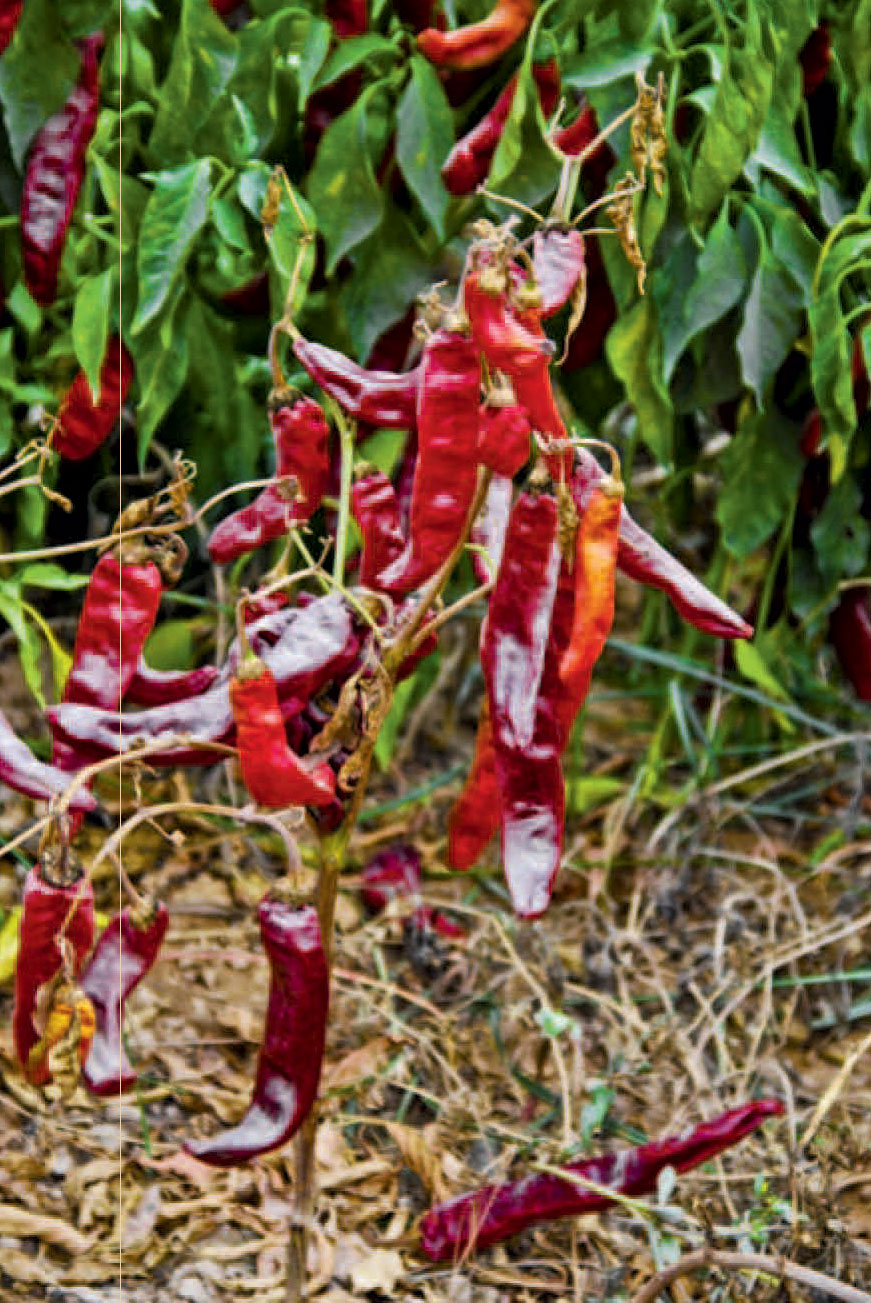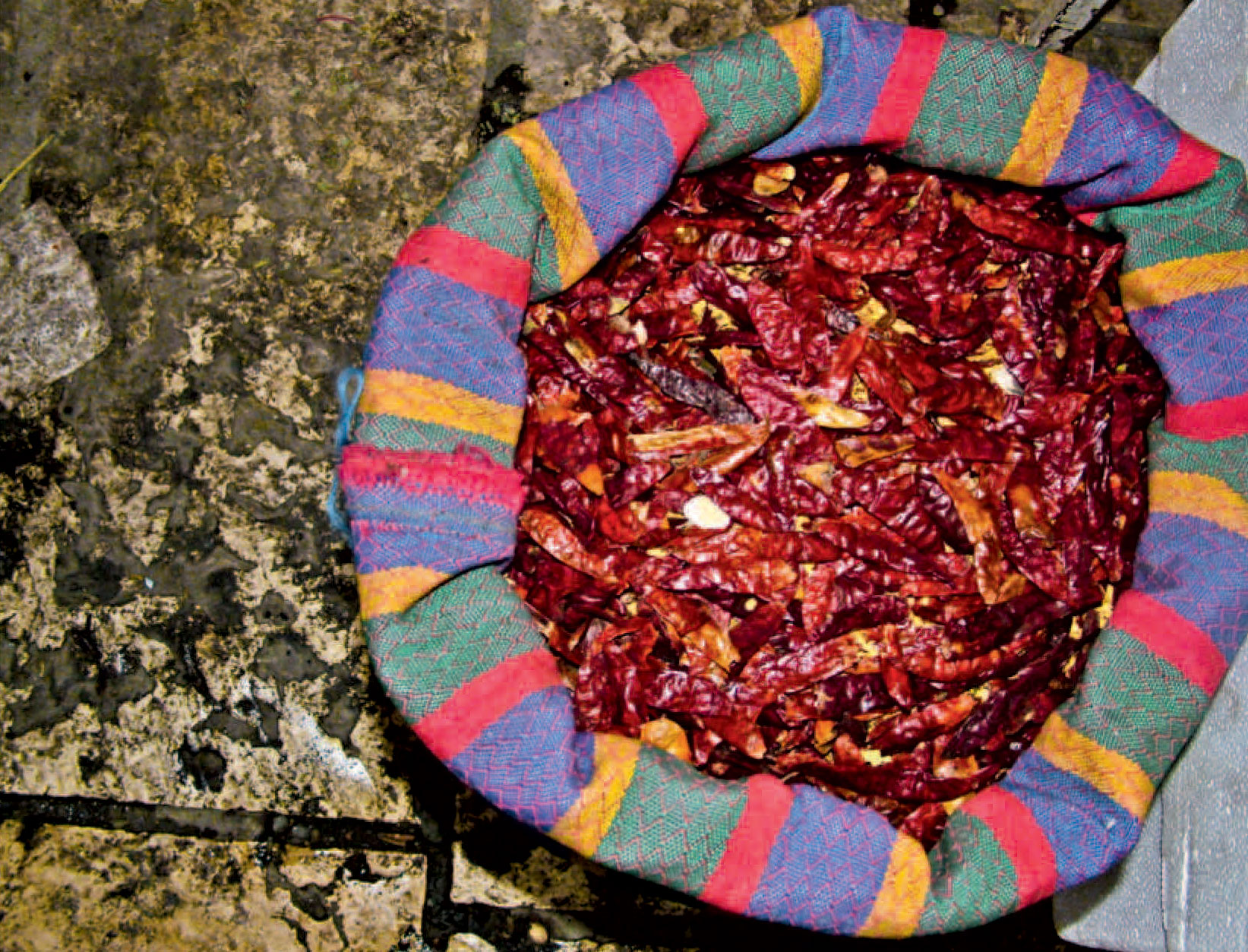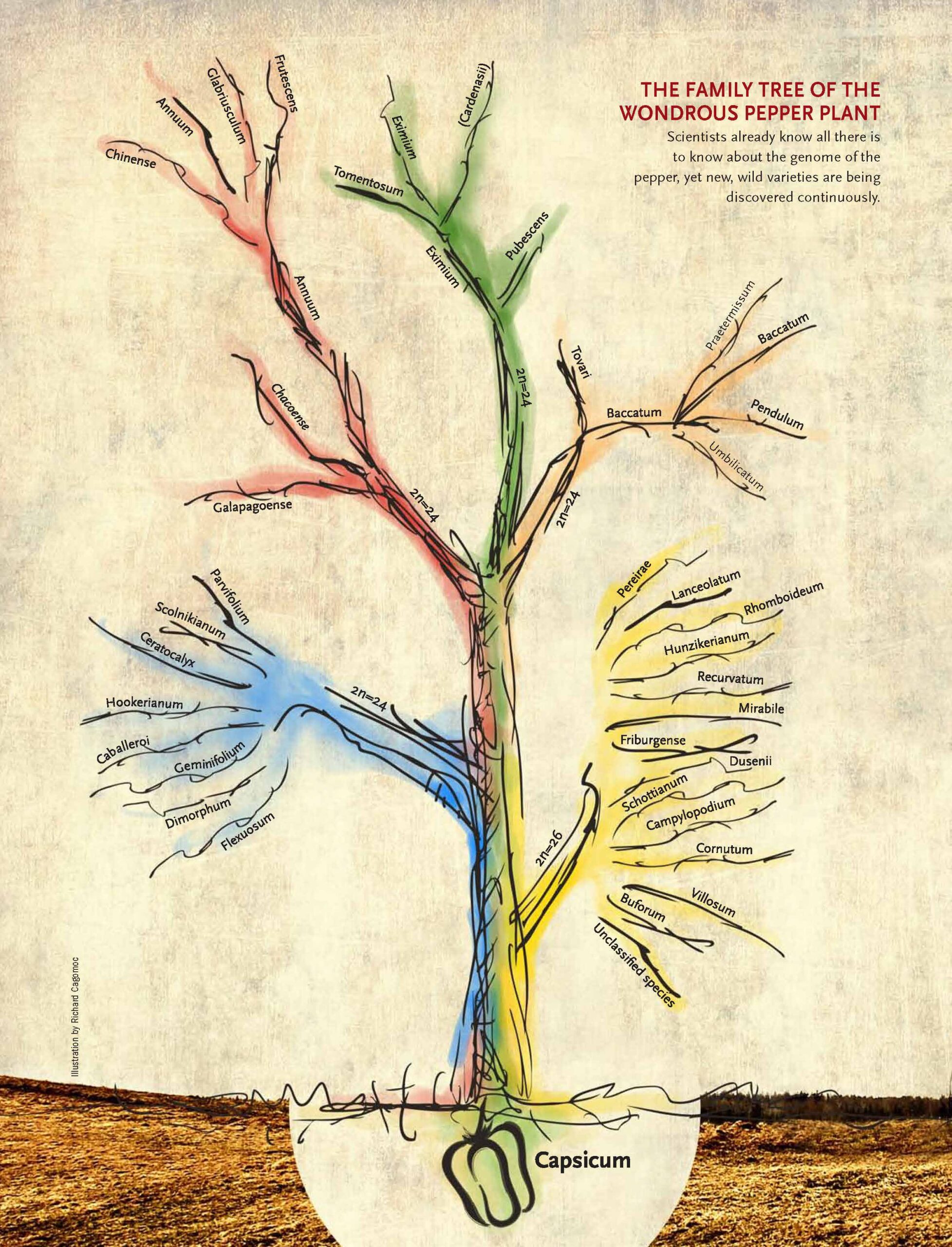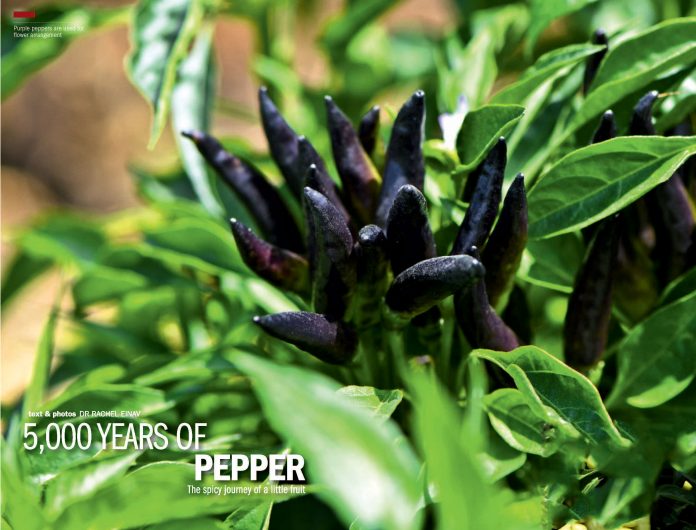THE pepper belongs to the Solanaceae family, from which we have also acquired the tomato, the potato and the eggplant. The variety of peppers is still a point of contention amongst taxonomists, but none of them argues the delicious taste – neither the tempestuous nor the placid.
Most researchers associate the various strains to one species – Capsicum annuum. However, in spite of the Latin name, which indicates that the pepper’s forefathers are annuals, most plants are biennial, and – with loving care – often even more prolific. Contemporary estimates account for about 30,000 strains of pepper belonging to 30 different species. Only five of these are the forbearers of edible peppers, and other types only grow only in South America – primarily in Brazil. Some have only recently been discovered, and some may still be waiting to be discovered. We can only hope that in the future, developers will find the time to grow the lesser-known ones, as well.
Scientists already know all there is to know about the genome of the pepper. Wild peppers may be identified based on the number of chromosomes (2n = 24 or 2n = 26). Cultivated varieties show multiple genomes, and thus the diversity of this fruit. I won’t presume to nail down the systematic of this wondrous species, since new, wild varieties are being discovered continuously, and genetic research continues to seek a relationship between them. Unlike other domesticated species (such as corn) whose ancestors have disappeared – possibly due to over-harvesting – wild peppers can still be found in the jungle.
Another species of pepper, whose definition is unchallenged – insofar as its commercial name is concerned – is Tabasco (Capsicum frutescens), its flowers green and anthers purple. Tabasco is one of the hottest varieties of peppers. It has not only maintained its independence but also its position in Nature, growing mainly in Central America. Regarding the sauce so slyly presented in its little green and red bottles, its manufacture is also unique – the peppers are smoked rather than cooked. Thus, the pungency is preserved and the precise recipe remains a secret told to none.

As previously mentioned, the pepper hails from the New World – Brazil and Colombia – where the original peppers are still cultivated and from which so many varieties have spawned and continue to be derived. The first mention of peppers is ascribed, naturally, to Christopher Columbus. The Italian historian Peter Martyr d’Anghiera was the first to chronicle the relationships between the Europeans and the American natives. In a missive dated September 1493, he mentions the pepper.

Diego Alvarez Chanca, the doctor on Columbus’ expedition to the West Indies that year, came back bearing “a pepper spicier than the Caucasian”. The first peppers to arrive were small and round, reminding Columbus of the taste and aspect of allspice, or, as he called it, the Jamaican pepper. Hence, he called these new fruits peppers too.
During that same period, reports flourished of purple peppers with white interiors, and perhaps more colours. A while later, Hans Stade described two types of pepper – yellow and red – both growing in a similar manner, he asserted. According to Stade, these were eaten in Barbados while still green and unripe. And so, we have today’s plethora of newly discovered and developed varieties on the grocery shelf.

Archaeological traces in Mexico show that peppers were cultivated four or five thousand years ago. This is difficult to ascertain, since the plant continues to grow wild, and during that period, it was conceivably harvested wild, even after it had already been domesticated and various strains developed.
Most notorious are the piquant fruits we call hot peppers. These contain a substance called capsaicin, which generates a fierce burning that most mammals do not appreciate. We humans have receptors that respond immediately. The brain reacts by raising the heart rate, increasing perspiration and releasing endorphins – thus the use of the pepper’s spiciness as a therapy, especially against pain.

The pepper invaded Western kitchens quite rapidly. One hundred years after Columbus introduced it, the pepper became the most common spice in kitchens spanning numerous cultures. Up until now, I have only managed to find two theories for our fondness of its spiciness: one is related to endorphins, which generate emotions of supreme excitement, and the other from my friend Ran Gil, who claims that people tend to eat spicy foods where beans are a central dietary component. The pepper’s spiciness slackens the pressure of the gasses accumulating in the stomach, thus improving the state of mind and social standing of the diner.

There are various ways of describing spiciness (different species have different levels and characteristics), which experts are able to discern. Until today, in some places around the globe, pub dwellers compete in their ability to consume chilli. It is an excellent mode of conflict resolution and attention generating; however, it can end in tears, but not so much physical damage. Ulcer patients are discouraged from participating.

Research shows that capsaicin has no effect on birds, since they lack the receptors in their brains required for reacting to spiciness. Thus, wild peppers can select those creatures that will perform the task of dissemination for them, preferring flying sorts to heavy-footed mammals. The red colour often serves as a warning to mammals, but attracts birds, as though emanating from a sweet fruit.

The canary I once raised loved pepper seeds, but I must admit that they were of the sweet type. Most of the spicy constituent in a pepper is contained in the membrane that connects the pips to the central stem, rather than in the pips themselves – another mechanism to keep the biting mammals away but invite the pecking birds. And yet, although Nature may proceed along its own unique path, it is actually those same mammals that disseminate the pepper throughout the earth and outside its natural American borders, cultivating it until this very day.
Read the rest of this article in No. 87 Issue 2/2012 of Asian Geographic magazine by subscribing here or check out all of our publications here.












